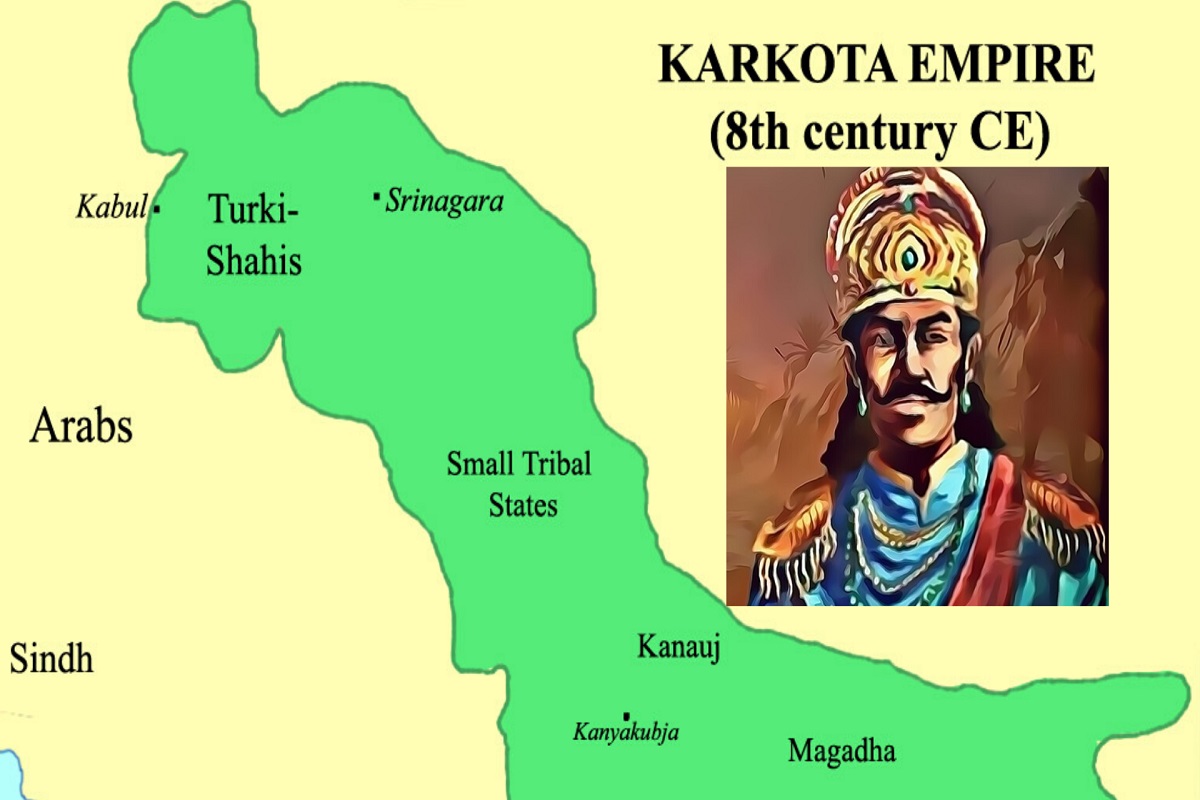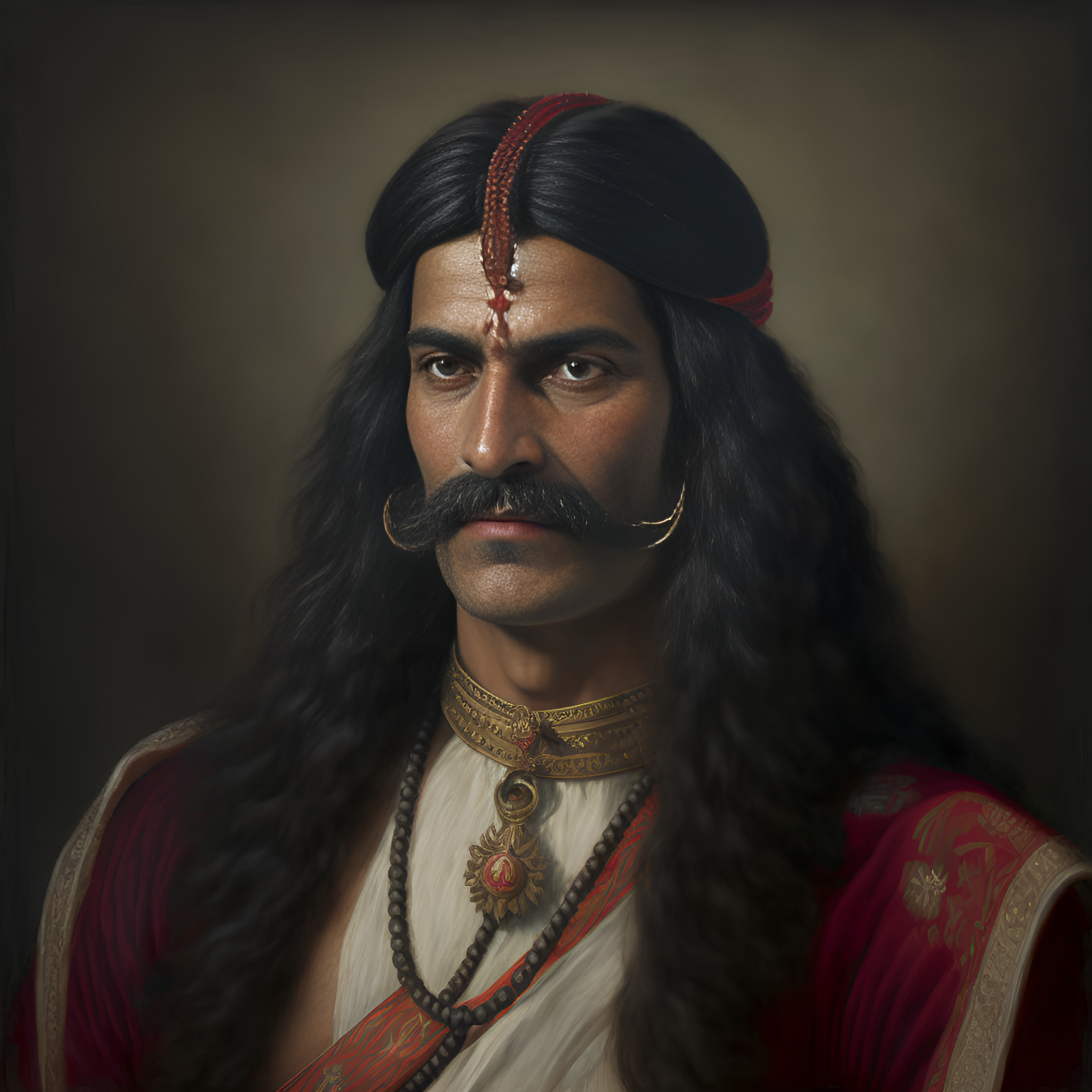Lalitaditya: The King Who Crushed Arab Invasions

Not enough is said about the mighty emperors of Bharat who stood shoulder to shoulder in fierce unity, defending this sacred land from waves of invaders who sought only to plunder and destroy. On this 78th Independence Day, let us shatter the colonial myth that India was always fragmented and needed a foreign hand to unify it.
This is the proud saga of a grand Hindu confederacy—visionary kings who anticipated danger, united their strength, and crushed the Arab dream of conquest. These rulers didn’t just fight for land; they fought to preserve Dharma and protect Bharat’s soul, just as Bangladeshi Hindus face atrocities today.
The Sindh Massacre: A Wake-Up Call for Bharat
Long before the British, the Arabs came—with bloodlust and conquest on their minds. And long before them, Bharat had already formed its first formidable line of defence.
In 724 CE, Lalitaditya Muktipada of the Karkota dynasty ascended the throne of Kashmir. A brilliant strategist and fierce warrior, he had studied the brutal attack of Mohammad Bin Qasim on Sindh just a decade prior. Qasim had unleashed terror in 711 CE, slaughtering the male population and killing the brave Raja Dahar in battle—thanks to a betrayal from within. Sindh, once ruled by the valiant Brahmin dynasty of Chacha Rai, fell under the Arab sword.
Yet, fate had its justice. Raja Dahar’s daughter, the courageous Suryadevi, cunningly misled the Caliph, leading to Qasim’s death. She and her sister, Parimaldevi, were martyred—but not before avenging their father with fearless pride. Their sacrifice echoed across the subcontinent, a warning of what lay ahead if Bharat faltered.
Lalitaditya Strikes First
The new Arab governor of Sindh, Junayd-al-Murri, set his eyes on Kashmir. But he underestimated Lalitaditya.
Refusing to wait for an invasion, Lalitaditya modernized his army, blending traditional elephant corps with fast-moving cavalry and trained infantry. With unmatched strategy, he crossed into Punjab, struck first, and dealt a crushing blow to Junayd’s forces. Kashmir stood unconquered—and Junayd never dared return.
The Arabs Push South, But Bharat Rises
Junayd, smarting from defeat, turned his attention south, launching campaigns across Kangda, Jodhpur, Jaisalmer, and Bharuch. But Lalitaditya had foreseen this move.
Unifying Hindu kings across the land, Lalitaditya forged a powerful military confederacy. From the snows of Kashmir to the shores of the south, Bharatiya kings rallied together to face the storm.

The United Hindu Wall That Stopped the Arabs
The confederacy included:
-
North India: Lalitaditya Muktipada of Kashmir, and Nagabhata I of Ujjain
-
East India: Gurjara-Pratihara rulers in Bengal and Bihar
-
West India: Lat king Pulkeshiraja, Jayabhat IV, and Bappa Rawal of Mewar
-
Central India: Nagabhata I of the Gurjara-Pratiharas
-
South India: Vikramaditya II of the Chalukyas and Rashtrakuta ruler Dantidurga
Together, this alliance formed a wall of iron. Junayd’s forces were hammered, bled, and routed. His dream of conquest lay in ruins. Three devastating blows had broken the back of the Arab invasion in Sindh, Multan, Balochistan, and Gandhar.
Junayd, desperate, turned towards Kannauj—but Lalitaditya once again struck with precision. He allied with Yashovarman of Kannauj, and together they dealt another humiliating defeat to the Arabs.
Junayd was recalled, and his successor, Tamim-al-Utbi, was soon sent running by Lalitaditya’s relentless campaigns. No Arab army dared cross the Indus for nearly three centuries after.
Legacy of Resistance and Dharma
This was not an isolated tale. Time and again, Bharat rose as one.
In 1325 CE, after the fall of the Kakatiyas, 75 Hindu chiefs of Telangana and Andhra Pradesh united under Prolaya Nayaka and Prolaya Vema Reddi. They liberated Warangal, Andhra’s coast, and North Tamil Nadu. By 1335, they crushed Delhi’s forces at Anegundi—paving the way for the glorious Vijayanagara Empire.
These are not just stories—they are legacies. Tales of courage, foresight, unity, and fierce devotion to Dharma. These kings were not fragmented warlords—they were the shield of a civilizational state.
Reclaiming Our Glory
It is time to reclaim these forgotten chapters. Bharat was never just “a collection of states.” It was—and always has been—a civilization, bound by Dharma, defended by its warrior kings, and united in spirit.
Let us celebrate Lalitaditya and the grand confederacy that crushed the invaders. Let us honor the warrior daughters of Sindh. Let us teach these stories with pride, so the children of Bharat know: we were never defeated—we always rose.
This is our legacy. This is our Bharat.





